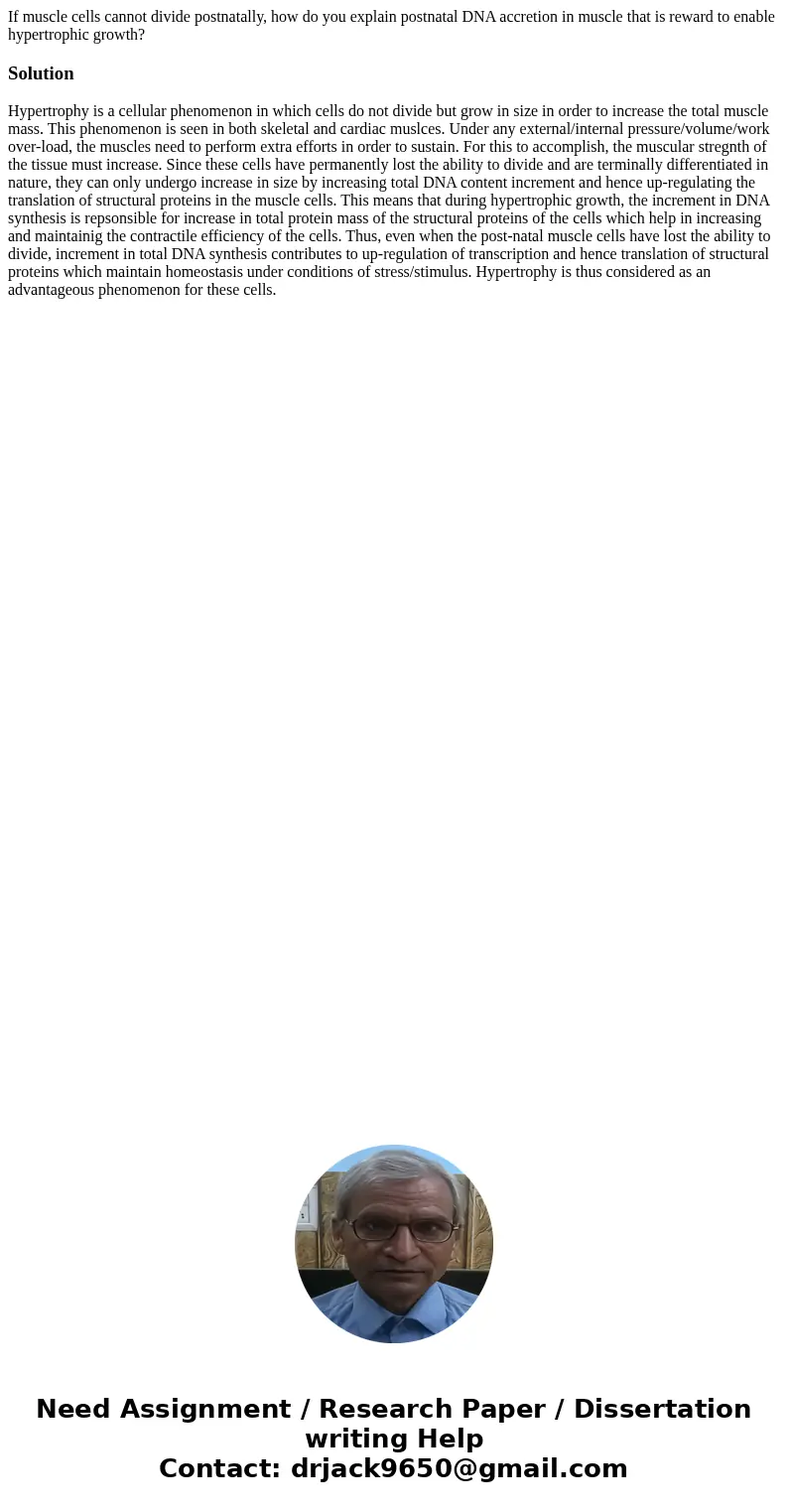If muscle cells cannot divide postnatally how do you explain
If muscle cells cannot divide postnatally, how do you explain postnatal DNA accretion in muscle that is reward to enable hypertrophic growth?
Solution
Hypertrophy is a cellular phenomenon in which cells do not divide but grow in size in order to increase the total muscle mass. This phenomenon is seen in both skeletal and cardiac muslces. Under any external/internal pressure/volume/work over-load, the muscles need to perform extra efforts in order to sustain. For this to accomplish, the muscular stregnth of the tissue must increase. Since these cells have permanently lost the ability to divide and are terminally differentiated in nature, they can only undergo increase in size by increasing total DNA content increment and hence up-regulating the translation of structural proteins in the muscle cells. This means that during hypertrophic growth, the increment in DNA synthesis is repsonsible for increase in total protein mass of the structural proteins of the cells which help in increasing and maintainig the contractile efficiency of the cells. Thus, even when the post-natal muscle cells have lost the ability to divide, increment in total DNA synthesis contributes to up-regulation of transcription and hence translation of structural proteins which maintain homeostasis under conditions of stress/stimulus. Hypertrophy is thus considered as an advantageous phenomenon for these cells.

 Homework Sourse
Homework Sourse